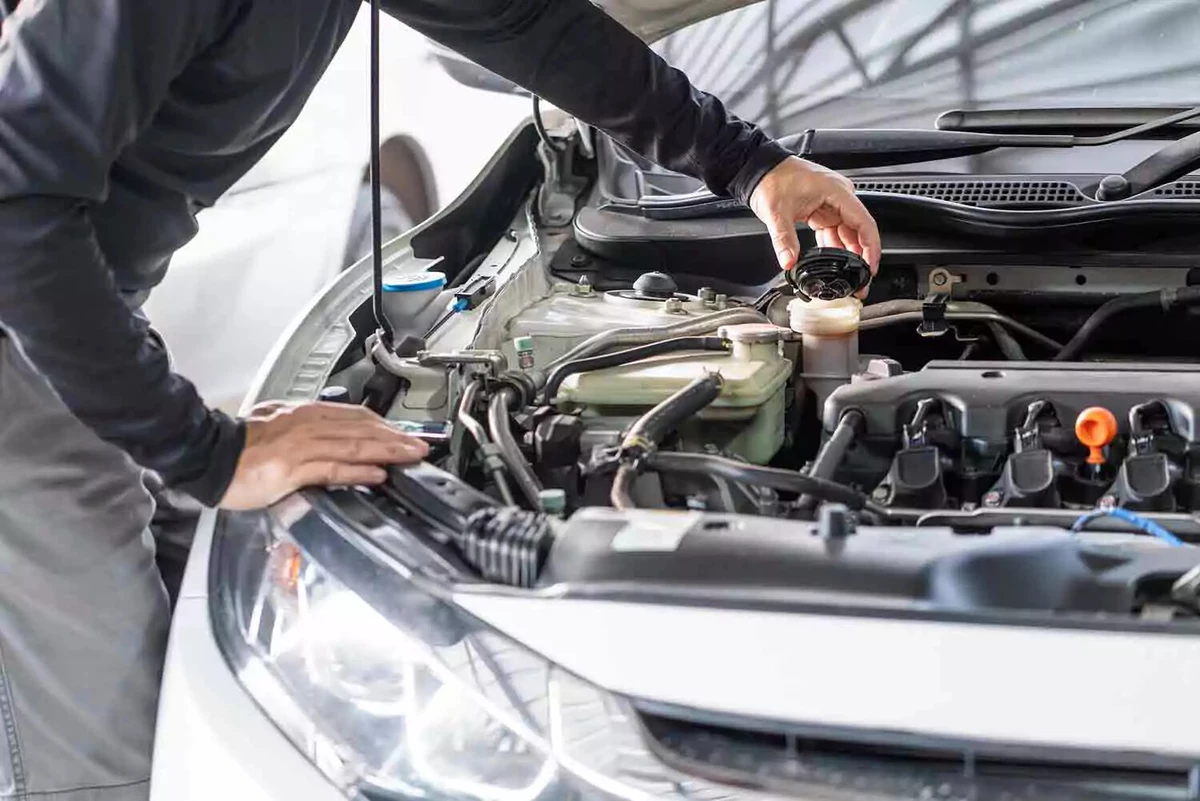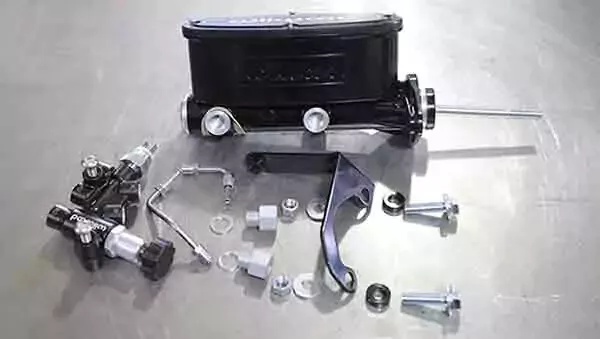When you push your foot on the brake pedal, hydraulic brake fluid is pushed out of the master cylinder, applying force against the brakes. When you release your foot, the fluid returns to the master cylinder through the lines in the system.
Bad fluid corrodes your braking system, risking safety and extra expense. We will explain when and why to replace brake fluid to maintain safe braking distances.
There are four basic brake fluid types for cars, SUVs, and trucks: DOT 3, DOT 4, DOT 5, and DOT 5.1. Only use DOT 3, DOT 4, or DOT 5.1. Check your owner’s manual to confirm the correct fluid used by your vehicle.
How Long Does Brake Fluid Last?

When brake fluid turns from amber to brown, it’s time to replace it.
You should replace your brake fluid every 30,000 to 45,000 miles (or two to three years). Open your hood to find the brake fluid reservoir. It’s usually near the windshield. Unscrew the cap and take a peek. (Caps on the washer fluid and clutch fluid reservoir have an icon indicating its use.)
Inspect the brake fluid to see if it needs to be changed. When the brake fluid is fresh, it has an amber hue that turns brown as it ages and becomes contaminated. There is a fill line on the reservoir that indicates if you are low on brake fluid.
See our detailed guide and video with step-by-step instructions for replacing your brake fluid.
Signs of Bad Brake Fluid

Brake fluid tests strips let you know if it’s time for a change.
Beyond a visual inspection, there are several symptoms indicating that your brake fluid is bad.
Burning smell: If you smell something burning when you hit the brakes, they could be overheating. That could be caused by old or degraded fluid.
Dashboard warning light: Some modern vehicles contain sensors that detect when there’s an issue with the brake system or fluid. Low and contaminated fluid can set off the alert, letting you know it’s time for maintenance.
Slower stopping times: If it takes longer than normal to stop the vehicle, degraded brake fluid may be to blame.
Soft/spongy brake pedal: If moisture gets into the brake fluid, it can leave your brake pedal feeling mushy.
Many of these symptoms can occur when there’s trouble with other brake components. If you notice any of these symptoms, make a complete inspection to determine the cause.
How long can you drive with bad brake fluid?
Old brake fluid can reduce stopping power, so you shouldn’t drive without performing the necessary maintenance. Brakes provide essential safety. As soon as you realize that your brake fluid needs to be changed, immediately replace the fluid.
Replacing Brake Fluid Is Easy (With a Friend)

While bleeding brakes doesn’t require a heavy investment in tools, you’ll need a buddy to help with the task.
With most vehicles, the job takes between one and two hours—and only requires basic tools. You will drain the system of the old fluid, add new fluid, and then bleed the brakes to remove all air from the brake lines. That last step is critical. Set up a time with a friend to do the job together.
If you are comfortable performing general maintenance, such as replacing brake pads or changing the oil, you shouldn’t have any trouble replacing the brake fluid.
Why is it important to bleed the brake lines?
Removing all the air bubbles from the brake lines ensures that proper hydraulic pressure is applied when you step on the brake pedal. When air gets trapped in the lines, it causes a delay in how fast the brakes respond—leaving you with the potential for a serious accident. In extreme cases, too much air could cause a complete failure. The brake pedal could go all the way to the floor and not engage the brakes.
Brake Fluid Replacement Costs

Brake fluid test strips are inexpensive and easy to use.
Brake fluid costs about $10 to $20 per 16-ounce bottle. Most cars use between one and two bottles. The average replacement cost usually adds up to between $20 and $70, depending on your vehicle.
The necessary tools for the job may add another $20 to $200 if you don’t already have them. You may only need a floor jack, jack stands, and a wrench. These are useful tools for any car repair. We recommend buying a brake bleeder kit or a vacuum pump to speed up the process. They might not be necessary if you have a friend who can help you bleed the brakes.
By comparison, a repair shop may charge $10 to $30 for the brake fluid and another $60 to $120 to change it. That produces a total bill between about $70 and $150.
We recommend doing a complete inspection when replacing the brake fluid. It’s the ideal time to check for leaks or cracks in all of the brake lines and hoses, the brake pads, brake rotors, and the master cylinder. You should repair anything that’s worn.
Check your vehicle’s recommended maintenance schedule. There may be other services that are suggested at the same time, such as rotating your tires, changing your oil and filter, or doing a transmission fluid flush.
Share your feedback
This article is meant to provide general guidance only. Automotive maintenance, repair, upgrade, and installation may depend on vehicle-specifics such as make and model. Always consult your owner's manual, repair guide for specific information for your particular vehicle and consider a licensed auto-care professional's help as well, particularly for advance repairs.













